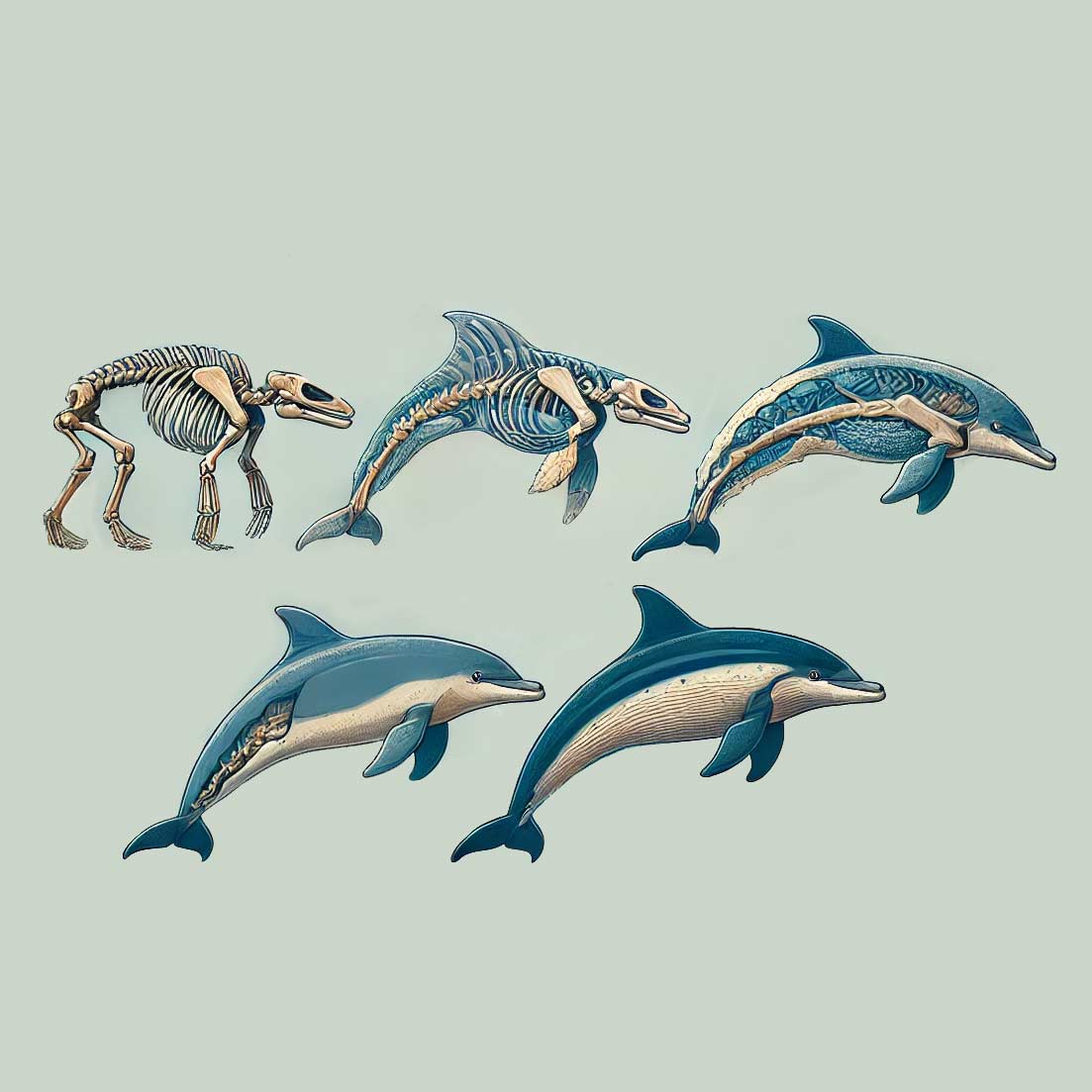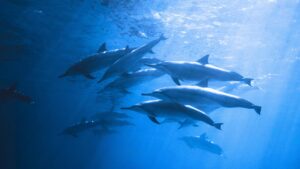Dolphins, among the most intelligent and agile marine creatures, have a captivating evolutionary history. Originating from terrestrial ancestors, these mammals underwent significant transformations, including the loss of their hind limbs. This article delves into the reasons behind this adaptation and the timeline of this remarkable evolutionary change.
Why Did Dolphins Lose Their Hind Limbs?
The transition from land to water necessitated several anatomical adaptations for early cetaceans (the group that includes dolphins, whales, and porpoises). One pivotal change was the reduction and eventual loss of hind limbs, which enhanced their aquatic lifestyle.
- Streamlined Bodies: The absence of hind limbs contributed to a more streamlined body, reducing drag and allowing for more efficient swimming.
- Enhanced Propulsion: Dolphins rely on powerful tail flukes for propulsion. The elimination of hind limbs enabled a more effective use of these flukes, improving speed and maneuverability.
- Energy Conservation: A streamlined form reduces energy expenditure during movement, an essential adaptation for survival in aquatic environments.
When Did Dolphins Lose Their Legs?
The evolutionary journey of dolphins from land-dwelling mammals to fully aquatic beings spans millions of years.
- Early Ancestors: Approximately 50 million years ago, early cetaceans like Pakicetus exhibited both terrestrial and aquatic traits, possessing functional hind limbs.
- Transition Phase: Between 41 and 50 million years ago, species such as Ambulocetus showcased adaptations for swimming, with hind limbs becoming less prominent.
- Modern Dolphins: By around 34 million years ago, ancestors of modern dolphins had significantly reduced hind limbs, with remnants present only internally as vestigial structures.
Genetic Factors Influencing Limb Loss
The reduction of hind limbs in dolphins is linked to specific genetic changes during embryonic development. Research indicates that the gene Sonic hedgehog (Shh), crucial for limb development, is inactive in dolphin embryos’ hind limb buds, leading to the cessation of hind limb formation.











